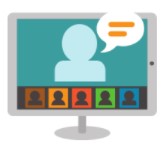I've learned firsthand that making artificial modifications to performance management doesn’t work. If you're a seasoned HR pro, you've likely had the same experience: repeatedly fine-tuning things like ratings and processes that you hope will work but don't.
When I was in my last HR role, I tried tackling the age-old rating inflation problem: Most managers rated employees in the top two categories of Exceeds or Outstanding. More people should have been labeled "Meets Expectations".
My solution? I masked "Meets Expectations" with the more positive wording of "Solid Performer."
Unsurprisingly, the change to "Solid Performer" did nothing to avert rating inflation. The "middle category," regardless of the label, means "average." Guess what? No one wants to assign a label of Meets Expectations. No one goes home to family and friends bragging that they received a Meets Expectations performance review.
Looking back, it's CRINGEY to think this tactic was the answer
Fixing or adjusting performance management always seems to be on the HR to-do list. Whether tweaking an existing system, creating something brand new, or exploring new software, step back and think strategically before taking action.
Here are ten pointers for creating a performance management system that works for everyone:
 1. Put the employee first and build around the goal of creating a favorable experience
1. Put the employee first and build around the goal of creating a favorable experience
So you've identified a new process or online tool that sounds great.
Stop here.
There are always good intentions when introducing new and improved performance management (PM) processes, but do yourself a favor and go beyond the opinion of your HR team. Take the employee's view when creating, communicating, and branding your new initiative. What exactly will the employee get out of the process?
Before rolling out an organizational-wide process or investing in a new system, create a pilot to collect employee feedback. You need feedback from the users, employees, and people managers. Ensure that non-HR employees are involved in the planning, and confirm that the experience is positive and adds value.
 2. Restructure and redefine the manager and employee roles
2. Restructure and redefine the manager and employee roles
Set the stage for employees and managers to work collaboratively. Instead of the manager evaluating and judging past performance, ensure that conversations focus on "now" and the "near term." Design a framework that incorporates a listening-to-learn experience that promotes curiosity and understanding.
 3. Provide training and support for all employees: Managers AND Individual Contributors
3. Provide training and support for all employees: Managers AND Individual Contributors
When it comes to elevating the quality and frequency of performance development conversations, managers and employees are equal partners and need training, tools, and templates to navigate discussions confidently.
Invest in developing performance coaching skills for managers and invest in supporting individual contributors with tools and training to actively participate in performance development conversations:

Employee Performance Coaching Training for Managers
The most common advice from HR to managers is "Give feedback early and often." Yet, just 6% of managers are highly skilled in having candid conversations about performance.
The problem with feedback is that most people don't know what to say. These skills don't come naturally but can be learned. Manager training should provide the skills and tools to identify and clearly communicate the employee's top strength(s) and the most critical area for development and near-term focus.
Build the confidence and capabilities of your managers to fairly and accurately assess an employee's current performance to identify what's working and the employee's positive impact and identify the one thing that would help the employee be even more effective. From there, it's all about having a roadmap for choosing the right words and talking points.
Individual Contributor Training
It's assumed that managers should be equipped with the skills and capability to initiate performance coaching and feedback conversations. Equally important is preparing your employees with the tools and skills to take a more active role in your performance process.
Show employees that you're invested in strengthening their relationships with their managers and actively helping them take charge of their career, performance, and development.
 4. Design a flexible but focused conversation framework
4. Design a flexible but focused conversation framework
Continuous performance management means rolling/ongoing conversations throughout the year, but not just any conversation. Use a template that helps guide discussions and ensure organizational-wide continuity. Flexibility means that people choose their topics and questions.
Sidestep untargeted advice like "meet more often" or "meet monthly." These exchanges can be too general – "So, how's everything going?" Answer: "great." Conversely, conversations can be too transactional and focused on status updates, project, and task lists (save these topics for 1:1 meetings).
 5. Empower your employees and managers to set meeting agendas
5. Empower your employees and managers to set meeting agendas
Ensure that conversations feel personalized, not prescribed. Allow employees and managers to choose from topics and questions that lead to pertinent information. A well-meaning list of pre-set topics that don't feel relevant will get old fast, giving the process a reputation of "another HR program" we have to follow. People may reluctantly comply with the process, but the experience will feel like an irrelevant time waster.
 6. Quick and efficient
6. Quick and efficient
Implement a simple, quick preparation process that guarantees a meaningful performance development conversation between the manager and employee. The method we developed is called the 10-Minute Questions Conversation. The prep work is five to ten minutes, tops. The meeting, guided by pre-selected questions, takes about 10 minutes and concludes with action items.
 7. Frequency and timing of continuous performance management conversations
7. Frequency and timing of continuous performance management conversations
How often should "continuous performance conversations" occur? Keep this in mind: the more time between conversations, the more attention gets paid to "past performance." For example, on the surface, quarterly conversations sound like a good idea. They're not. Quarterly conversations throw people into a mindset of reviewing the past quarter. If you want to get away from "reviewing," focus on a monthly or a minimum every other month frequency.
 8. Don't count on technology as a standalone solution
8. Don't count on technology as a standalone solution
The PM solutions market is flooded with automated systems, including apps, all claiming to have the answer to launching your successful continuous performance management initiative.
Technology can help with reminders and serve as a place to house meeting notes, but ensure that managers and employees meet "voice-to-voice," whether in-person, by phone, or remote conferencing. Giving people "high-fives, claps, stars, and anonymous feedback lacks the human element.
 9. Continue assessing and tracking employee performance without ratings
9. Continue assessing and tracking employee performance without ratings
It's tempting to do away with ratings, but a must in any successful program requires assessing and monitoring performance effectiveness. Annual reviews and the traditional 1 – 5 rating schemes are going away because the categories are too narrow to capture human performance accurately.
Here's what's not going away: you still need to know how well people perform their jobs.
A common substitute for ratings is the 9-box which is designed to measure "performance and potential." Don't complicate things by bringing "potential" into the equation. The potential part of talent review discussions usually pertains to succession planning.
Stay the course! Remember, you need to assess and track "performance" only.
Our model is called the Employee Performance Continuum, a four-square model that helps assess and track Work Results and Observable Behaviors. It's a proven tool that supports managers to accurately evaluate their team and develop tailored performance-boosting coaching (when appropriately used).
 10. Leverage and involve the HR team
10. Leverage and involve the HR team
While the movement away from annual performance reviews and ratings is no longer a new concept, HR professionals must keep evolving their thinking and gaining new skills to support the organization's transition. Your program's success will largely hinge on establishing HR's supporting role.
Modern-day PM is more strategic and dynamic than the performance administration process that many HR pros have grown up with. HR's part is anything but diminished. Expand the capabilities and skills of your HR and talent professionals by defining roles and responsibilities and offering training as part of your program launch.
Train your HR team to provide performance coaching for managers needing extra help sorting through sticky performance issues. Your HR team should go through the same training as managers to help reinforce the concepts, utilize a shared vocabulary, and ensure follow-through.

Conclusion
Step back and think strategically about improving your organization's PM process. PM impacts everyone, so it's imperative to get it right and create an experience that people love (or at least like).
 VIEW YOUR PROCESS FROM THE EMPLOYEE LENS
VIEW YOUR PROCESS FROM THE EMPLOYEE LENS
Start by putting the employee's experience at the center, emphasize an equal role for the manager and employee, provide flexibility in setting meeting agendas, and make the process quick, easy, and meaningful. No matter how great a new system seems, pilot and gather employee and manager feedback before an organizational-wide rollout.

MEASURING AND TRACKING PERFORMANCE PROGRESS IS ESSENTIAL
The whole point of performance management is to drive effectiveness, so you need a baseline to determine and track the effectiveness of your process. Continue to assess and track performance without yearly reviews and ratings. Most importantly, ensure that the information is used to help drive the right conversations.

PERFORMANCE CONVERSATION TRAINING FOR MANAGERS
AND INDIVIDUAL CONTRIBUTORS
MANAGERS: Performance coaching and feedback training for managers isn't a "nice to have"; it's a "need to have" for building the capabilities and confidence to engage in conversations that drive performance and potential.
INDIVIDUAL CONTRIBUTORS: Go beyond telling employees that they own their performance and development. Be sure to provide the tools, training, and processes that enable active engagement and ownership.
 AN OPPORTUNITY TO DEVELOP YOUR HR TEAM
AN OPPORTUNITY TO DEVELOP YOUR HR TEAM
Last, consider your initiative of modernizing employee performance as a development opportunity for your HR and Talent team. Rather than playing the traditional role of "administrator," HR takes on a more strategic role in evolving the system and supporting managers with performance coaching.





.png?width=300&height=180&name=Copy%20of%20Copy%20of%20Untitled%20(4).png)